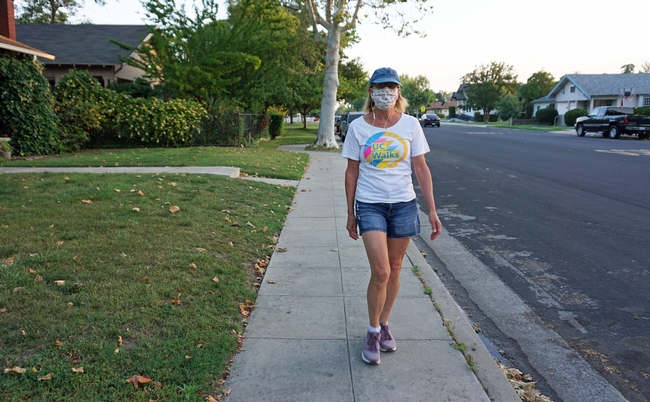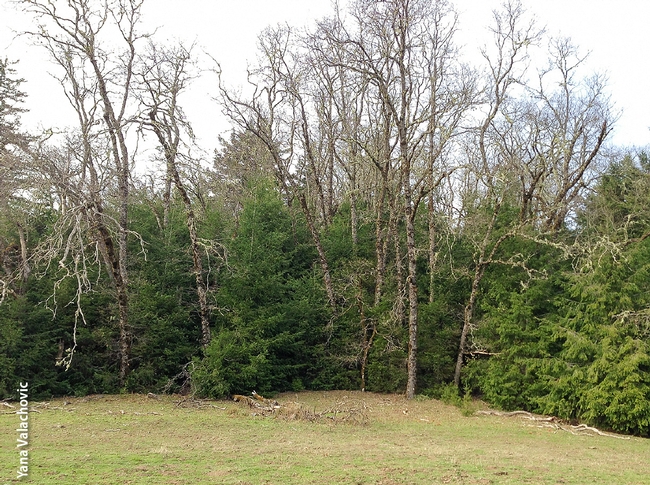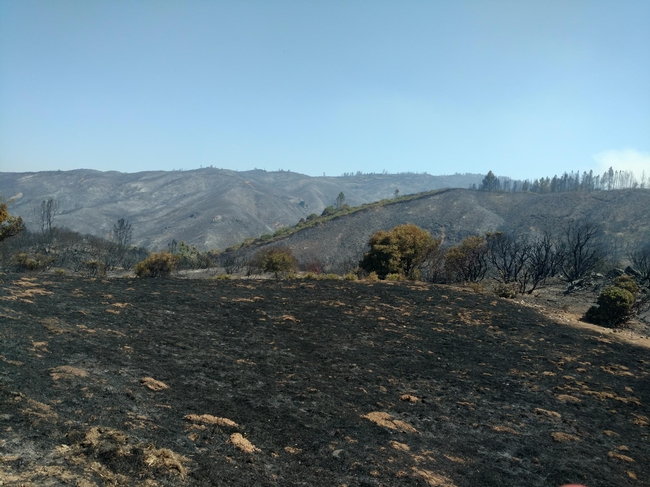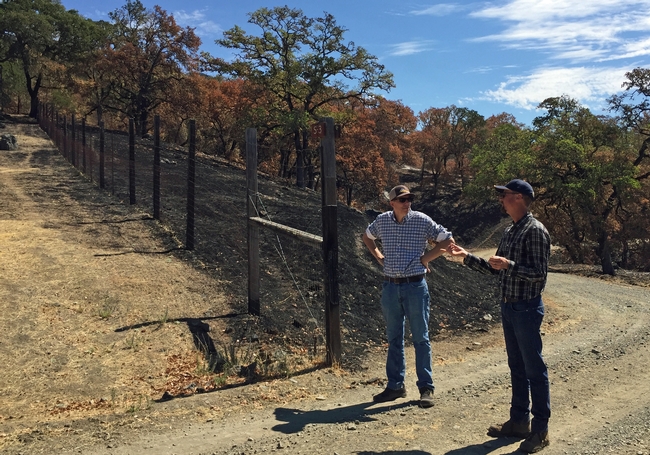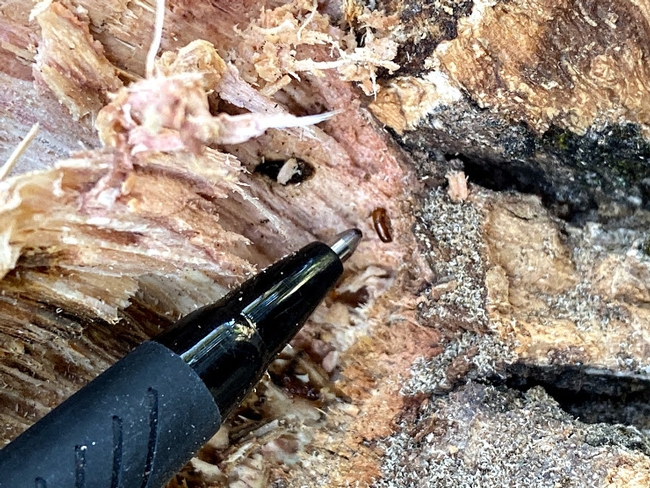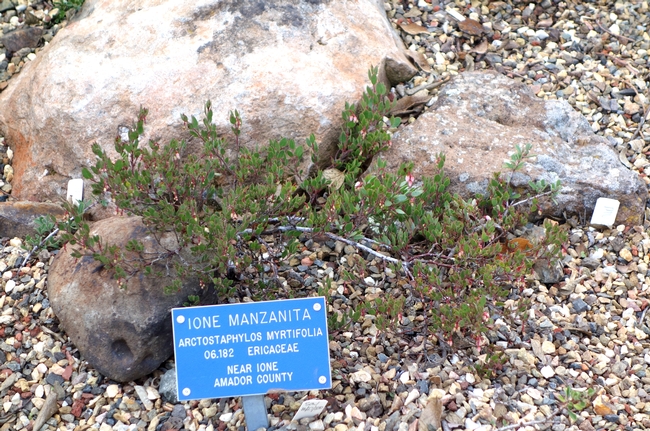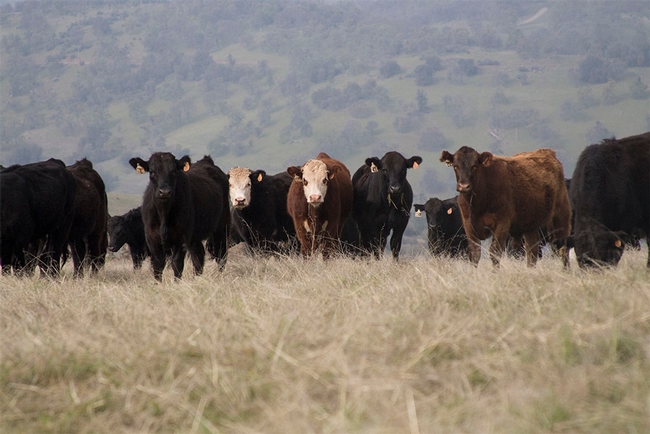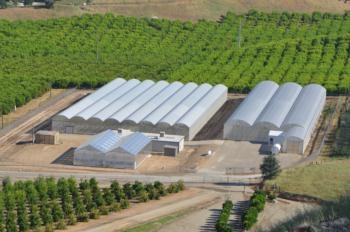Announcements
UC Walks together apart on May 6
Shelter in place got you stuck in the house? Not on May 6, 2020! Walking together, even when we're apart - that's the mission for Virtual UC Walks happening on May 6, 2020! Anytime on May 6, put on your walking shoes and take a walk around your block.
Share your experience with the ANR community. Submit your best nature, urban or fashion photo from your walk to the photo contest and win some cool prizes! Keep a look out for further details from your Staff Ambassador on how to participate in Virtual UC Walks 2020.
Contact your Staff Assembly Ambassador to get involved.
FitBit raffle give away!
Enter our raffle by doing the following:
- Complete this survey
- Promote your walk on social media (Facebook, Instagram or Twitter) using the hashtags #UCANRmoves and #ucwalks
Photo contest
The best nature, best fashion, and best urban point-of-interest photos will win a signed UC WALKS t-shirt, water bottle and fanny pack. Take photos along your walk and submit your best ONE photo here.
Please remember to stick to California's shelter in place guidelines while outdoors:
- Be sure to wear a mask during your walk
- Stay 6 feet apart from others while outside in your community
- Cover coughs and sneezes with your elbow
- Be sure to wash your hands for at least 20 seconds upon returning home
Make your walk an adventure, play Walking BINGO. Download the card at https://ucanr.edu/sites/Staff_Assembly/files/324342.pdf.
For more information, contact your Staff Assembly Ambassador or visit http://staffassembly.ucanr.edu/Subcommittees/Wellness_Committee/Wellness_Committee/UC_Walks/
Hundreds sign up for online oak woodland workshop
California oak woodlands are highly prized ecoregions where stately trees, many of them hundreds of years old, are cornerstones of a habitat for wildlife and native plants. Sadly, some of these ecosystems are seriously threatened by exotic pests and diseases, encroachment by less desirable vegetation, and wildfire.
Each year, UC Cooperative Extension hosts workshops to share scientific developments aimed at conserving these important habitats – and the economic value of ranching – on oak woodlands, which are found on the lower elevation slopes of the Sierra Nevada, the Coast Range and other foothill areas of California.
Typically, the workshops are held in person and draw moderate-sized audiences for presentations, questions and answers, and field trips. Because of the COVID-19 pandemic, this year's workshop was offered online in April with pre-recorded presentations available for viewing at the participants' convenience and a live question-and-answer session on Zoom.
The retooled event garnered 500 registrants, over 300 views of the YouTube videos and 140 participants in the live Q&A session. The presentations and Q&A session are still available online for future viewing as well.
“People from all walks of life participated, including those with professional and personal interest in oak woodlands,” said Yana Valachovic, UCCE forest advisor in Humboldt and Del Norte counties and a conference organizer.
Presentations at the 2020 conference included the following topics:
Encroachment by Douglas-fir
In Northern California, the biodiversity of oak woodlands is being threatened by Douglas-fir encroachment. The oaks' shade helps the young conifers get established with protection from harsh sun. In time, the fast-growing Douglas-fir trees pierce the oak canopies and begin to crowd out the areas' native understories, which are important for the diversity of birds, mammals and reptiles attracted to oaks.
As the Douglas-fir continue to grow and multiply, they threaten the very lives of the oak trees and the unique ecosystem they dominate.
To better understand the Douglas-fir encroachment, Valachovic established 10 research sites in Humboldt and Mendocino counties to gather information about the fate and the age of oaks. She and her research partners determined the ages of the oaks and firs, and counted the seedlings, saplings, snags and understory vegetation.
“With this research, we were able to demonstrate that even though the oak trees can be smaller in diameter they are much older than the Douglas-fir trees,” Valachovic said. “The encroachment process is happening quickly, and the oaks are falling out of the system.”
The shift appears to have been initiated in the mid-19th and early-20th centuries, coinciding with the Gold Rush and wildfire suppression.
With the data confirming Douglas-fir encroachment, Valachovic turned her attention to oak woodland restoration. At 14 sites in Humboldt and Trinity counties, her team studied the effects of Douglas-fir removal.
“Grasses and forbs under the oaks reestablished. Diameter growth on the oaks increased,” she said.
These research findings contributed directly to changes in policy that had previously limited land owners' ability to remove and sell conifers encroaching on oak woodland. The research also helped create new funding opportunities to support oak woodland restoration and conservation in Northern California.
Case study of oak woodland wildfire recovery
In July 2018, about two-thirds of the 5,289-acre UC Hopland Research and Extension Center was burned by the River Fire.
The transformation of the land, which had likely been without a large wildland fire for at least 100 years, was intense and stressful, said UC Cooperative Extension forest advisor Michael Jones. However, it also provided a unique opportunity for researchers to compare the impact of wildfire on the resiliency of vegetation on grazed and ungrazed oak woodland.
Jones established 35 one-fifth acre research plots at the research center and collected data two months following the fire and one year later. The research will continue in the future to better understand long-term impacts, but Jones was able to share revealing early results at the workshop.
Right after the fire, in severely burned areas areas, the future of the oaks looked ominous. Jones predicted 40% tree mortality.
“The oaks were exposed to persistent, intense heat. They were cooked,” he said. “But two months after the fire, we were already seeing basal sprouts. This was an amazing response by the trees. Oaks are pretty damn tough.”
A year after the fire, surveys showed that tree mortality in the burned areas was 25%, much less than Jones' early predictions. While some management for specific situations in severely burned areas may be necessary – such as removal of hazard trees, reducing fuels in defensible spaces or removal to control invasive species – the results of this work show the trees recover naturally.
“Esthetically, I know these systems aren't as pleasing as they were before, but ecologically, they are healthy and recovering,” he said. “In 100 years, it will look just as good as before the fire.”
Fire impacts in woodland areas previously grazed and not grazed
The fire on the research station also permitted Jones to compare the fire's differing impact on non-grazed and grazed oak woodland. At first, the grazed areas looked almost unscathed with minimal flame scorching on the bark, while an area where the pasture hadn't been grazed for 25 years had evidence of much higher severity fire.
“Grazing is a phenomenal way to help manage fuels,” Jones said. However, the grazed areas displayed ecological shortcomings a year later.
“In grazed pastures, the large mature trees were still alive, but there was no oak regeneration (basal sprouting or seedlings),” Jones said. “In the ungrazed area, a lot of biomass had been killed, but there's nearly 100% resprout of oak trees and we have an impressive amount of oak seedling recruitment.”
Jones said he isn't discouraging grazing.
“But it is important to protect sites from grazing, and especially wildlife browse, when a landowner or land managers' objectives are to regenerate or conserve oak woodlands,” Jones said.
New ambrosia beetle another threat to California oaks
Akif Eskalen, UC Cooperative Extension specialist in the Department of Plant Pathology at UC Davis, has identified a new insect-fungus team that causes oak borer wilt in Northern California Valley and Blue Oaks. It is an ambrosia beetle, commonly known as Mediterranean Oak Borer, which carries several fungi in its mouth. The beetle bores into the tree and introduces fungi to grow for food. The fungi spreads and disturbs the transportation of water and nutrients, causing wilt in the tree.
The oozing and staining lesions on the bark are similar to other oak fungal diseases, such as Sudden Oak Death. The beetle – native of Mediterranean basin countries in Africa, Asia and Europe – cannot fly far, so most likely is transported for long distances on infested firewood.
During the workshop, Eskalen suggested not moving firewood, removing heavily infested trees and chipping infested wood into 1-inch particles to reduce the spread of the ambrosia beetle and its fungal partner. He asked viewers to report any suspected oak tree infestations to the local agricultural commissioner, CDFA Diagnostic Laboratories, UC Cooperative Extension advisors or CALFIRE. Chemical options for sparing oaks from the ambrosia beetles' devastation are under investigation.
Threats to oaks and other native plants from root rotting Phytophthora
Restoration plantings have inadvertently introduced plant pathogens to native oak woodland ecosystems in California, said Ted Swiecki of Phytosphere Research, an organization that provides consulting services related to natural resource management, horticulture, urban forestry, and agriculture. The group of pathogens causing the damage are largely from the Phytophthora genus, first described in the 1860s. The name translates from Greek to “plant destroyer.”
Swiecki has observed when Phytophthora infested plants and soils are introduced to native habitats, the pathogens can attack various native plants, including toyon, madrone, manzanita and full-grown oaks. Once established, the pathogen can spread along drainages, by moving soil from one area to another and by hitchhiking on equipment, tires and hiking boots.
The pathogen can easily be overlooked at nurseries, which, by their nature, have conditions that favor Phytophthora development. Plants at nurseries are well watered, have high root density and are often placed on the ground where they can pick up pathogens.
He said the best approach to tackling Phytophthora is not using nursery stock for restoration or beautification of natural oak woodland. Direct seeding, using natural regeneration, or onsite propagation are safer ways to enhance vegetation in oak woodland.
“It's easier to prevent Phytophthora from being introduced in the first place and much cheaper and more effective than trying to eradicate it later,” Siewcki said.
Sierra Foothill REC seeks research proposals
The UC Sierra Foothill Research and Extension Center (SFREC) is soliciting proposals to support new and continuing research on rangeland and oak woodland ecology and management, beef cattle health, production and management, as well as related agricultural and natural resource themes important to California.
Academics from any UC institutions are eligible to apply for funding. Funding occurs through SFREC contributions to labor to support development of experimental infrastructure, experimental manipulations, data collection, animal handling and other labor activities necessary to conduct field research.
Successful proposals funded for the upcoming program year, July 1, 2020–June 30, 2021, are eligible to receive up to $20,000 in center contributions toward staff labor.
Proposals submitted by June 1, 2020, will receive full consideration for funding; however, proposals are accepted on an ongoing basis and supported if there are available resources. Proposals need to be submitted through the Universal Review System (URS) via the SFREC website at http://sfrec.ucanr.edu.
Basic resources and facilities to support research include 5,000 acres of northern Sierra foothill oak woodland–annual grass rangeland as well as irrigated pastures, riparian areas and access to the Yuba River. An approximately 160-head cow-calf herd and access to up to 300 head of steers/heifers support animal production, animal health and grazing research. SFREC maintains a wet/dry lab for sample processing, rooms in a house available for long-term research stays, a 16-bed dormitory as well as large and small conference rooms.
For further information regarding research opportunities, contact Jeremy James, SFREC Director at (530) 639-8803 or jjjames@ucanr.edu, or visit sfrec.ucanr.edu.
Lindcove REC calls for research proposals
Lindcove Research & Extension Center (LREC), located in the foothills of Tulare County, has land, labor and facilities available for 2020/2021 research projects. The Research Advisory Committee reviews proposals and projects are evaluated based on scientific merit and regional need. While LREC is primarily a citrus research center, avocado, walnut and olive trees are also grown and other crops are welcome.
Five acres of open ground are available for planting (Field 50).
Citrus orchards available for research:
- Valencia strains on mixed rootstock (Field 11S), 2.5 acres, planted 1993
- Washington Navel on Troyer rootstock (field 83) 4.0 acres, planted 1989
- Washington Navel on Troyer rootstock (field 93) 4.5 acres, planted 1983
- Tango mandarin on Carrizo rootstock (Field 23) 3.8 acres, planted 2010
- Tango Mandarin on Carrizo rootstock (Field 91C) .61 acres, planted 2011
- Fukumoto navel on mixed rootstock (Field 64W), 1.49 acres, planted 2005
- Mixed citrus on mixed rootstock (Field 11N), 1.7 acres, planted 2006
- Mixed citrus on mixed rootstock (Field 52W), 1.7 acres, planted 2006
- Mixed citrus on mixed rootstock (Field 63E), .80 acres, planted 2006
- Mixed Clementine's on Carrizo rootstock (Field 73N) 1.72 acres planted 2004
- Lemons on unknown rootstock (Field 81E) .45 acres
- Lemons on unknown rootstock (Field 82E) 1.15 acres
Facilities and support staff:
The electronic fruit grading system in the packline provides individual fruit data including weight, size, volume, number, scarring, texture, Brix and color. The packline also has a high-pressure fruit washer, waxer and dryer. Three cold storage rooms that hold 60 fruit bins each, walk-in cold boxes, and de-greening rooms have the capability for ethylene gassing.
The Fruit Quality Evaluation Laboratory is capable of evaluating rind thickness, granulation, texture, puff and crease, juice weights, Brix, sugar/acid ratio and the California standard. A Staff Research Associate located at the Center is available to provide field and laboratory data collection.
The center maintains the Citrus Clonal Protection Program's (CCPP) foundation budwood orchard for virus-free, true-to-type citrus. More than 300 different selections of citrus are in this collection, and budwood is available to California nurserymen and growers at a minimal cost. The majority of these varieties are now maintained in a screenhouse to further protect them from insect vectored diseases.
Proposal process:
Proposals are due May 17, 2020. To submit a proposal, go to the UC LREC website http://lrec.ucanr.edu/, click on the ‘research' tab, then the ‘submitting a proposal' tab, then the ‘Proposal management' tab. Detailed instructions of how to submit a proposal can be downloaded using the ‘User Guide' link on the RAC project management page.
If you have any questions regarding research, contact Beth Grafton-Cardwell, director at (559) 592-2408 Ext 1152 or eegraftoncardwell@ucanr.edu. For questions regarding land, labor and facilities, contact Kurt Schmidt, superintendent at (559) 592-2408 Ext 1153 or krschmidt@ucanr.edu. For information on submission of proposals, contact Jasmin Del Toro, business officer, (559) 592-2408 Ext 1151 or jzdeltoro@ucanr.edu.
Learning & Development: Facilitation, Racial Understanding, Engaging Webinars
Find webinar announcements and recordings here.
Find information on Extension delivery; building support; and office, team and personal management here.
Call for WebANR Presenters and Topics
Do you have a WebANR Cafe Thursday topic and presenter to recommend for our Third Thursday Cafe' WebANRs? Or do you have a topic that you would like to present?
WebANR topics are based on the areas of Extension Delivery, Building Support, and Office & Team Management. Our targeted audience members are ANR advisors, community educators and others. Your feedback will be reviewed by leadership and we will let you know at a future date if added to the WebANR planning process. Please share your recommendations here.
Collaborative Facilitation – Are you interested in:
Learning collaborative facilitation techniques?
Increasing the effectiveness and efficiency of your collaborative processes?
Increasing your comfort level in applying facilitation skills?
If so, please fill out this interest survey by Friday May 8, 2020. We will let poll responders know if we have enough people to form a cohort (20 people).
More information on Collaborative Facilitation and Group Process
You have participated in many meetings. You've observed that some are successful, decisions are made, and action items are delegated. Other meetings have seemed pointless. Still others go on and on with no decisions made. Worse are contentious meetings where bridges are burned. If you are ready to run successful meetings, consider participating in the Collaborative Facilitation and Group Process Tools Workshop. It is open to all UC ANR academic and staff employees, including Statewide Program volunteers.
Collaborations and group processes are complex, dynamic and unpredictable. Successful processes are based on shared understanding and learning, and work towards common goals. However, we know that this doesn't always happen. Then what?
Collaborative facilitation and group process tools support success, allowing everyone to feel heard and to contribute. Whether you have a lead facilitator role or are a group participant, join us in learning appropriate and applicable facilitation tools to use before, during and after your meetings.
Racial Understanding
From July 27-29, 2020, 20 members of the ANR community will engage in the “Coming Together for Racial Understanding” workshop. Participants will explore the power of language, their commitment to inclusion, understanding of past and present policies and practices of inequality and how to begin the work of dismantling racism and inequities within our UC ANR community.
UC ANR has committed to additional diversity, equity and inclusion activities including a Diversity, Equity, and Inclusion (DEI) Collaborative Group, the Intercultural Development inventory (IDI) program, and some employees voluntarily participated in community forums such as the 21-Day Racial Challenge and others. These activities enable ANR employees to dig deeper and develop greater understanding of our unconscious biases, societal structures that exclude people, and provide transformative challenges in the quest of for strengthening inclusion at ANR – within and outside the organization.
Upcoming Webinars
eXtension Social Café - Extension Response & Resources for Extension Professionals Working Online
Thursday, April 30, 2020
10 a.m.-11 a.m.
Join Rose Hayden-Smith for an informal, drop-in conversations and questions about the effective use of social media and communications in Extension work. It will open with a 5-15 minute “tutorial” of a tool or feature on commonly used social platforms, or a brief showcase of a Cooperative Extension employee who is using digital communications in innovative and effective ways. The remainder of the time will be devoted to sharing, discussion and Q&A. See more events on the eXtension Social Café Calendar.
Juntos – A College Preparation Program
Tuesday, May 5, 2020
1 p.m.-2 p.m.
In this webinar, Jose Campos will share the Juntos Program, a college preparation course being offered in multiple counties in California primarily to Latinx youth. Jose will provide an overview and host a discussion how other counties could possibly replicate this program. Zoom access: https://ucanr.zoom.us/j/751701428 | +1 669 900 6833 | Webinar ID: 751 701 428
Video Production discussion and next steps
May 12, 2020
10 a.m.-11:30 a.m.
- Q&A with participants about video editing. What was difficult? What went well?
- Sharing and review of examples
- More information coming!
https://ucanr.zoom.us/j/751701428 | +1 669 900 6833 or +1 646 558 8656 | Webinar ID: 751 701 428
Creating & Conducting Engaging Webinars
Register here.
Wednesday, May 13
11 a.m.-12:30 p.m.
In this webinar, hosted by eXtension Foundation staff Mark Locklear, Molly Immendorf and Aaron Weibe, you'll learn how to:
- Plan a webinar by answering a few key questions about audience and objectives;
- Anticipate and troubleshoot technology issues (including security);
- Optimize Zoom features to meet your learning objectives;
- Structure a meaningful online experience that meets participants needs; and
- Use a range of tools and strategies to keep participants engaged (polls, surveys, chat, etc.).
Register here: https://extension.zoom.us/webinar/register/WN_df8Hf5cxRTKoy4IErsV5hA
How to Host Engaging Webinars: Advanced Topics
May 18, 2020
Time TBD
Registration: Coming
In this webinar, hosted by eXtension Foundation staff Mark Locklear, Molly Immendorf and Aaron Weibe, you'll learn how to use:
- More advanced Zoom features (e.g., rooms, settings);
- Zoom recordings on other platforms (YouTube, Facebook Live, Google Drive);
- Archived chat to create educational content for other platforms; and
- Webinars as Learning Circles for more focused and engaged small group work.
Registration coming soon.
Disability Management
May 21, 2020
Noon-12:30 p.m.
Join David Ritz, Disability Management Director at UC ANR. Learn about your role as a supervisor and the policies you need to know. Zoom access: https://ucanr.zoom.us/j/751701428 | 669 900 6833 or +1 646 558 8656| Web ID: 751 701 428
Award Process
Wednesday May 27, 2020
9:30-10:30 am
Once a sponsor elects to fund a proposal, the review, negotiation and award acceptance process begins. This webinar walks you through what is happening in the Office of Contracts and Grants, and what to do when the accepted agreement arrives in your office. https://ucanr.zoom.us/j/751701428 | +1 669 900 6833 or +1 646 558 8656 | Webinar ID: 751 701 428
Everyone can learn something new.
ANR Learning & Development
Find webinar announcements and recordings here.
Office: 530.750.1239
jlazulai@ucanr.edu

